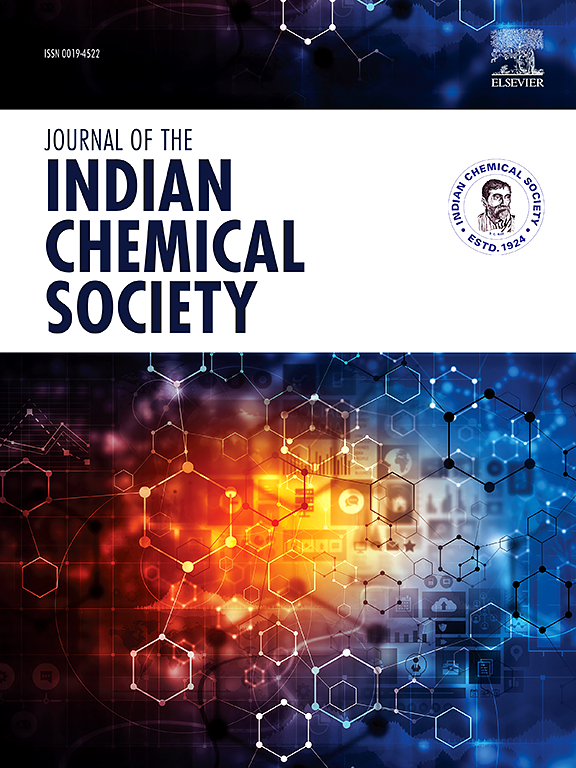Ag/AgCl/BaCl2@ZnO/GO Nanocomposite: Synthesis, characterization and application in water splitting
IF 3.2
4区 化学
Q2 CHEMISTRY, MULTIDISCIPLINARY
引用次数: 0
Abstract
In this investigation, we had prepared a hybrid assembly Ag/AgCl(BaCl2)@ZnO via one pot method by introducing barium chloride to make a plasmonic Ag-loaded AgCl on ZnO. The molecular device was further modified by addition of GO. As-synthesized Ag/AgCl(BaCl2)@ZnO hybrid and Ag/AgCl(BaCl2)@ZnO/GO ternary nanocomposites, exhibit a noticeable photocatalytic hydrogen production rate through cleavage of water, Where photo-induced electrons transferred from Ag/AgCl@ZnO to Ag/BaCl2@ZnO through the additional surface states (SURS) as well as metal induced gap states(MIGS) that resulted in low photo-generated charge-carrier recombination rate in Ag/AgCl(BaCl2)@ZnO/GO ternary nanocomposite. Which, exhibited the good hydrogen production ability (292.0 μmol H2 h−1g−1) over the hybrid assembly (241.5 μmol H2 h−1g−1) towards the water splitting under the visible light irradiation. The X-ray powder diffraction, UV–Vis spectroscopy, FTIR, X-ray photoelectron spectroscopy (XPS), spectroflourimetry, FESEM, and EDX are used to elucidate the electronic environment of the as-synthesized samples as well as to correlate with their photocatalytic activity in terms of water splitting.

Ag/AgCl/BaCl2@ZnO/GO纳米复合材料:合成、表征及其在水裂解中的应用
在本研究中,我们采用一锅法制备了Ag/AgCl(BaCl2)@ZnO杂化组件,通过引入氯化钡在ZnO上制备了等离子体负载Ag的AgCl。通过添加氧化石墨烯对分子器件进行进一步修饰。Ag/AgCl(BaCl2)@ZnO杂化和Ag/AgCl(BaCl2)@ZnO/GO三元纳米复合材料通过水的解理表现出明显的光催化产氢速率,其中光诱导电子通过附加表面态(SURS)和金属诱导间隙态(MIGS)从Ag/AgCl@ZnO转移到Ag/BaCl2@ZnO,导致Ag/AgCl(BaCl2)@ZnO/GO三元纳米复合材料的光生电荷载流子重组率低。结果表明,在可见光照射下,杂化组合的水裂解产氢能力(292.0 μmol H2 h−1g−1)优于杂化组合(241.5 μmol H2 h−1g−1)。利用x射线粉末衍射、紫外可见光谱、FTIR、x射线光电子能谱(XPS)、荧光光谱法、FESEM和EDX分析了合成样品的电子环境,并对其光催化活性进行了分析。
本文章由计算机程序翻译,如有差异,请以英文原文为准。
求助全文
约1分钟内获得全文
求助全文
来源期刊
CiteScore
3.50
自引率
7.70%
发文量
492
审稿时长
3-8 weeks
期刊介绍:
The Journal of the Indian Chemical Society publishes original, fundamental, theorical, experimental research work of highest quality in all areas of chemistry, biochemistry, medicinal chemistry, electrochemistry, agrochemistry, chemical engineering and technology, food chemistry, environmental chemistry, etc.

 求助内容:
求助内容: 应助结果提醒方式:
应助结果提醒方式:


